Emergency Preparedness

Preparing for an Emergency
Emergencies strike when least expected, often leaving us feeling vulnerable and unprepared. Whether it’s a natural disaster like a hurricane, earthquake, or flood or a human made crisis such as a fire or accident, being equipped with the knowledge and resources to handle emergencies can make all the difference. In this guide, we’ll explore the essential steps to emergency preparedness, empowering you to protect yourself, your loved ones, and your community.
Create a Plan:
Developing an emergency plan is the cornerstone of preparedness. Sit down with your coworkers to discuss potential risks and how you’ll respond to them. Identify evacuation routes, designate meeting points, and establish a communication plan. Ensure everyone knows where to find important documents, emergency supplies, and how to shut off utilities if necessary. This may include providing workers access to an Emergency Evacuation Plan, ensuring all workers know where the muster point is located, and how to effectively and safely evacuate in the event of an emergency. Important documents must be included on your company’s health and safety board, along with your health and safety program which includes hazard identification and control policies.
Stay Informed:
Knowledge is power during an emergency. Stay informed about potential risks in your area by signing up for emergency alerts and monitoring local news and weather reports. Understand the emergency procedures for your workplace. Being aware of potential threats allows you and your coworkers to take proactive measures to stay safe.
Prepare Your Space:
Mitigate risks by securing your workspace against potential hazards by installing smoke detectors, carbon monoxide detectors, and fire extinguishers. Anchor heavy tools, furniture, and appliances, and secure shelves and cabinets to prevent them from toppling during earthquakes or storms. Keep emergency supplies easily accessible and conduct regular maintenance checks on utilities and structural integrity.
Build An Emergency Kit
A well-stocked emergency kit can provide essential supplies during a crisis. Include items such as non-perishable food, water, medication, first aid supplies, flashlights, batteries, and multi tools. Tailor your kit to meet the specific needs of your workplace.
Both onsite and at the head office, there must be a complete first aid kit that is appropriate to the number of workers nearby. All first aid kits must be fully equipped with the necessary items such as bandages, gauze, or scissors, to ensure preparedness in the event of a medical emergency.
Stay Calm
In the chaos of an emergency, remaining calm can save lives. Encourage everyone in your workplace to stay composed and follow the emergency plan. Be flexible and willing to adapt to changing circumstances. Sometimes, quick thinking and improvisation are necessary to navigate unexpected challenges.
Practice Evacuation Drills
Regularly practicing evacuation drills ensures that everyone knows what to do in case of an emergency. Time your drills and work on improving your evacuation efficiency. Practice different scenarios, including evacuating by foot and by car, and designate a backup evacuation route in case your primary route is blocked.
Having regular safety toolbox talks helps to ensure workers are aware of the emergency protocols and procedures in place, helps to prevent further risk of injury in the event of an emergency.
Stay Connected
Communication is crucial during emergencies. Keep a list of emergency contacts, including family members, neighbors, and local authorities. Ensure everyone knows how to contact each other in case of separation. Consider establishing a designated out of area contact person to coordinate communication if local lines are down.
Establish Emergency Medical Procedures
Develop protocols for responding to medical emergencies in the workplace. Identify employees trained in first aid and CPR and ensure that first aid kits are readily available and fully stocked. Establish procedures for accessing medical assistance promptly, including contacting emergency services and transporting injured employees to medical facilities if necessary.
All certified first aid attendants and emergency contacts must be posted to your company’s health and safety board.
Stay Informed and Updated
Stay informed about changes in regulations, best practices, and emerging threats related to workplace safety and emergency preparedness. Regularly review and update your emergency response plan and procedures based on lessons learned from drills, incidents, and new information.
By taking proactive steps to prepare for emergencies in the workplace, employers can create a safer environment for employees and reduce the potential impact of emergencies on business operations. Remember, preparedness is a shared responsibility that requires collaboration, training, and ongoing commitment from everyone in the workplace. Start today and empower your workplace to handle any emergency with confidence and resilience.
Learn More
To learn more about how your company can ensure emergency preparedness and protect your workers from workplace hazards, contact us at 905-669-5444 or info@safetyfirstconsulting.ca for more information on our health and safety consulting. Safety First will provide your company with the assistance required to achieve compliance with government health and safety regulations.

